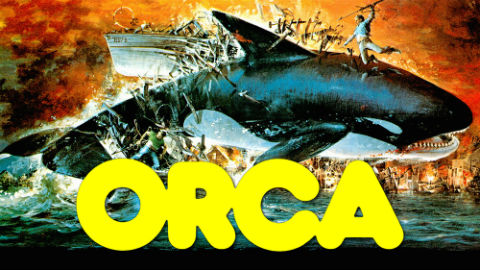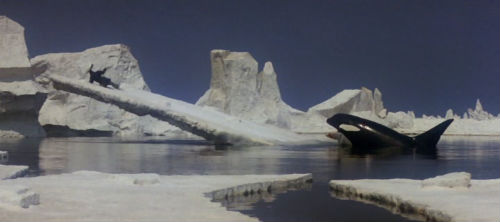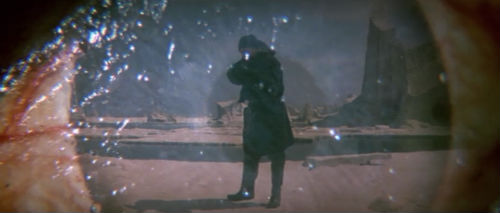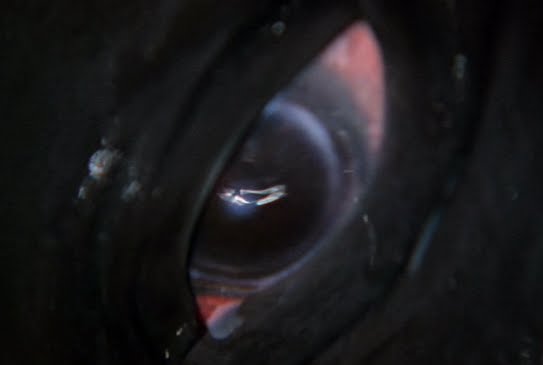Posted on December 23, 2017
5 Rad Christmas Jams
1. The Waitresses – Christmas Wrapping
I used to always hear this song in department stores and never realized who sang it, though I recognized the singer’s voice as being similar to the girl who sang the “I Know What Boys Like” song, (which I hated and would instantly flee the dance floor when it would be played at mid 00’s hipster DJ nights.) Well, turns out it is the same singer and band, and I just couldn’t compute that a band that played a song I despised so much could have created one that is an absolute masterpiece. Christmas Wrapping is an amazing song, maybe the best Christmas song ever. Patty Donahue unfortunately died at a young age (only 40.) RIP
2. Taylor Swift – Last Christmas
I know I know, but seriously I prefer this version to the Wham! version. This song is just better with a female voice and preferably one that doesn’t morph it into some kind of excessive adlib R&B monstrosity with all kinds of extra eeee’s and aaaaaah’s (like what is commonly done to the national anthem when singers get unnecessarily creative.) Anyway, the first time I really began to appreciate this song was in 2012. I was in Las Vegas alone and miserable on Christmas that year in what I look back on as my favorite vacation of my life, and there was a band on Fremont St called “Candy and the Canes” which was playing this song in the Taylor Swift style. Now whenever I hear it, it takes me back.
3. Tom Petty and the Heartbreakers – Christmas All Over Again
Admittedly, I have never been much of a Tom Petty fan. His songs typically remind me of a really horrible era in the early 90’s where kids in my class would randomly belt out lyrics to Free Fallin’ in phony southern accents. It was a dark time period. Christmas All Over Again on the other hand conjurs up an entirely different memory. In the winter of 1996, I was living on my own in Phoenix, coming into my (now long gone) prime as a young man. This song would play in a jam packed, Paradise Valley mall (now almost literally a shadow of its former self.) Melrose place reruns aired daily on the E! Channel, and most of the people in my family were still alive back then. What an exciting time it was. Also, RIP Tom Petty.
4. Captain Sensible – One Christmas Catalogue
Not much to say about this one. Another department store classic. I don’t have any personal anecdote that colors my perception of this song. It is just a really great song, and just has that “1980’s lost in thought on a drive in the middle of the night through the city” feel to it. If you know, then you know.
5. Bing Crosby and The Andrews Sisters – Mele Kalikimaka
Of course, this song always reminds me of the diving board scene in Christmas Vacation. That is reason to like it in and of itself. It’s also one of those songs where everyone butchers the lyrics and just mumbles something random at the “mele kalikimaka” part. What most people don’t realize though, is that this is a great tune to repeatedly sing when you want to annoy your girlfriend (perhaps second only to pretty much any song by Edd “Kookie” Byrnes.) I only say the main part correctly about 3% of the time, but she rolls her eyes, and pleads for me to stop (in an exasperated tone) no matter what kind of gibberish I try to pass off as the chorus.
Brandon Adamson is the author of Skytrain to Nowhere
Posted on June 21, 2017
The Card In the Coin Return
The Card in the Coin Return
Hey silly rabbit in
the bottomless top hat.
Caught in the rat race?
Do you ever feel like a
pasty pale mouse trapped
dead center square
tic-tac-dough
in a cat’s game
stalemate?
just mod-mod-modular cube maze bait
right smack-dab in
the middle of your cell pad
wanna run, make tracks, have a look around the place for
random artifacts but
color coded cops on your case
one door away like
Lock ‘n’ Chase
an unsolved Rubik’s snake
what a puzzlecade
levels, lives, points…but
no little brass key to jimmy open the briefcase
no solution in plain sight
no clear escape
no veering from the paperwork trail surveilled on
Memorex VHS tape
Don’t cry
Just try love, try hate, try again
when they rewind
push play
another coffee break
meditate
dreamlike stateless
curious expression
unibrow bridge across an
energy depleted face
evolves to form
the watchful cyclops’ eye
with laserlike focus
to materialize
the holographic breadcrumbs that
trace a corridor
squeeze through
neon
exit
sign
dividing line
flip side
open space!
Brandon Adamson is the author of Skytrain to Nowhere
Posted on February 14, 2017
The Other Mayans

One of my favorite things about the 1970s is the bizarre architectural projects that were conceived and somehow greenlighted during the period. Many people now living in the “ruins” of these communities and surrounding neighborhoods are often completely oblivious to the cultural relevance of these structures and fail to muster any appreciation for the aesthetic uniqueness of the community.
Often times visiting these areas is a depressing expedition, because you might consider living there, but the property owners, tenants have no idea how chic the place could be and have never considered the idea that they are living anywhere but a mediocre dump just waiting to be torn down and replaced with some cheaply built McMansions (with brand new granite counter tops!) Another example of this would be the older Vegas casinos, like Circus Circus. To me, these are the destinations of wonder, excitement and magic…but to most people, they’re just dreary.

Anyway, there’s this interesting 1970s Condominium complex in Scottsdale, AZ called “Maya,” that I’ve always found fascinating. Built in 1971, it’s a large condo community with Mayan themed buildings and aesthetics. While these “themes” are typically only superficially incorporated into the actual edifices, Maya developers actually went through the trouble of installing some detailed statues, pillars and miscellaneous decor, giving the grounds some minor semblance of an authentically exotic ambiance.

As a side note, acting legend Cesar Romero (who played The Joker in the original 60’s Batman TV series) actually lived in these condos for a period of time.

10-15 years ago this community had degenerated into a pretty seedy place. Despite being in a prime location, like many older complexes it attracted a lot of sketchy people (and still does.) However, I was pleased to see when I revisited it the other day, that the community looks to have been revived, and the buildings and grounds appear to be well maintained. Clearly some residents and owners at least see the value here and are interested in preserving this unrecognized historical “landmark.” This is the sort of cultural appropriation I can appreciate.
Posted on October 27, 2016
Death Wish For Killer Whales
So I hadn’t seen Orca (1977) since it was on HBO sometime in the early to mid 80s. Even then I didn’t recall much of the plot (besides the obvious.) The only scene I really remembered is when the main character is trapped on the floating iceberg at the end, and the whale tilts it, sending the man sliding down it to his inevitable death.
I decided to revisit the film given that it was produced by Italian film producer Dino De Laurentiis (who also produced Death Wish) and directed by Michael Anderson, who had just previously directed one of my favorite films, Logan’s Run. Anderson would also later direct the eerily watchable TV miniseries adaptation of The Martian Chronicles in 1980, which I also enjoyed. Given this, I went into watching Orca probably with higher expectations than most people would when they sit down to view a 70’s horror movie about a killer whale that attacks people.
I’ll spare you the suspense, and just tell you up front that this movie is not good. I was prepared going into re-seeing this film to possibly write about how it was much better than I remembered it, maybe even better than Jaws and an underappreciated classic…but it just isn’t any of those things. It is interesting though, which is partially what makes it so difficult to watch, because one can’t help but be dismayed by all the wasted potential (including a cast which boasts of such highly respected names as Richard Harris and Charlotte Rampling.) Charlotte you might recall was in the news recently when she was attacked by SJWs for stating the obvious about the lack of “diversity” at the 2016 Oscars .
The opening sequences and first 10-15 minutes or so are just beautiful, featuring an award winning musical score and leaving you with the impression you’re diving into a real artistic masterpiece. Unfortunately, it’s pretty much downhill (way downhill) from there until the last 5 minutes of the movie when it gets good again. In fact, if you cut about an hour and a half out of Orca , and just made a film out of the first 15 minutes and the last 5, you’d have a damned good movie.
The plot is actually very similar to Death Wish, only this time it’s the killer whale who is the vigilante seeking revenge for the death of his wife and child, whom were killed by a careless and emotionally troubled fisherman. The fisherman having lost his own wife and child in a car accident with a drunk driver, feels guilt as well as empathy for the whale. He wishes he could communicate how sorry he is, but the killer whale apparently isn’t interested in apologies and terrorizes him, his crew and the entire town out of vengeance. Orca is based on the novel of the same name (which I haven’t read,) by Arthur Herzog.
Since killer whales are highly intelligent, conceptually the plot isn’t all that implausible on the surface. It’s not a stretch to believe that the creature could harbor complex emotions and be able to carry out elaborate revenge scenarios. At least it’s more believable than a great white shark doing these things, like in the awful Jaws the Revenge (which was probably a ripoff of Orca come to think of it.) Cinematically, Orca actually reminds me a lot of Tentacles, an Italian horror film which also came out in 1977 featuring another great musical score and preposterous plot (this time with a giant Octopus terrorizing a beach community and a couple of friendly killer whales teaming up with man as the heroes who save the day.)
The problem with Orca though is that pushes the whale’s vengeance plot way past any point of believability, to the point of absurdity. If they had just kept it reasonable to where it was simply the story of an intelligent whale that was upset over the loss of its family and neurotically began attacking local people and seeking retribution on the fishing boat crew he recognized as being the culprits, it could have worked and been profound. However, what actually happens is the whale terrorizes the fisherman and the town with such precision and specificity that it just makes the whole premise (which was already implausible) utterly ridiculous. For example, the whale angrily sinks every boat in the harbor, except the fisherman responsible, supposedly to torment him and to indicate he wants to have a showdown with the man out at sea. The local townspeople and everyone seems to just know that’s what the whale wants. They presume to know what the whale is thinking. The whale even somehow knows what house the fisherman and his crew live in and he comes by and knocks it into the water. The film even contains the stereotypical wise and spiritually connected Indian/native man, there to instruct the fisherman what he must do. I suppose in 1977, the prophetic and mysterious Indian character may not have been a tired cliché yet. At a certain point in the film I gave up and no longer felt any sympathy for or connection to the characters. The movie becomes so outlandish and unreal that I just kind of detached from the story…almost.
“If he [the orca] is like a human, what he wants isn’t necessarily what he should have.” -Rachel
The ending though, is interesting. When Captain Nolan’s (the fisherman) wife and child were killed by the drunk driver, he just got really depressed. He didn’t really take any action. Because the whale is actively seeking revenge and on a grand scale, the Captain concludes that the whale loved his family more than the fisherman loved his own. Much like many humans, the whale ends up seeking a punishing revenge that’s excessive for what the crime against him warranted, while the captain wrongly assumed he and the whale might come to some kind of understanding and make peace. He hesitates when he has a clear chance to shoot the whale near the end. The compassionate gesture doesn’t appear to phase the whale, which proceeds to kill him mercilessly anyway.
The film ends with the orca swimming beneath the thick arctic ice, unable to surface. Having swam out too far in committing his last act of revenge against the fisherman, the whale himself seems unlikely to survive the ordeal. Some have interpreted this as the whale possibly committing suicide. Perhaps though it’s illustrative of how when righteous vengeance is taken too far, it can wind up consuming and destroying oneself. The whale stubbornly insisted on getting more revenge than he was owed and paid the price.
Captain Nolan: Can you commit a sin against an animal?
Priest: Why, you can commit a sin against a blade of grass. Sins are really against oneself.
The plot device is ironically relatable to the film itself, which overextends its whale revenge premise such that it strains the capacity of viewers to take any part of Orca seriously as a movie. If it accomplishes one thing though, it’s that it makes us think about how we treat these creatures, not because they might hate us and become bloodthirsty murderous maniacs if we’re mean to them (they probably won’t…even when we deserve it,) but because they’re worthy of more respect and compassion than we tend to give them.
Posted on November 1, 2015
Having a Bontempi Sound
I picked up a couple of vintage Italian Bontempi organs/synths recently, mainly because I liked the design and aesthetic of them (as a brand, Bontempi was not known for having a great sound.) Their advertising was beautiful though and captures a sort of innocence which resonates with the childhood I experienced. I obtained the Bontempi Memoplay (pictured above) which is a pretty limited but unique, “programmable” synth from the late 70s / early 80s. It only has one sound, but it’s a decent one in my opinion.
The other Bontempi organ I got my hands on is the Mod 109. This was basically a really hip and modern looking organ,(mine is orange in color) but in reality it’s just a standard reed organ which produces a sound similar to an accordion.
For an example of one the better organs Bontempi produced,(which I was not fortunate enough to be able to find) check out the awesome 1979 Bontempi commercial below. It exemplifies a childhood ambiance and European cultural era that my mind/alter ego fights to recapture every day.
Brandon Adamson is the author of “Beatnik Fascism“














